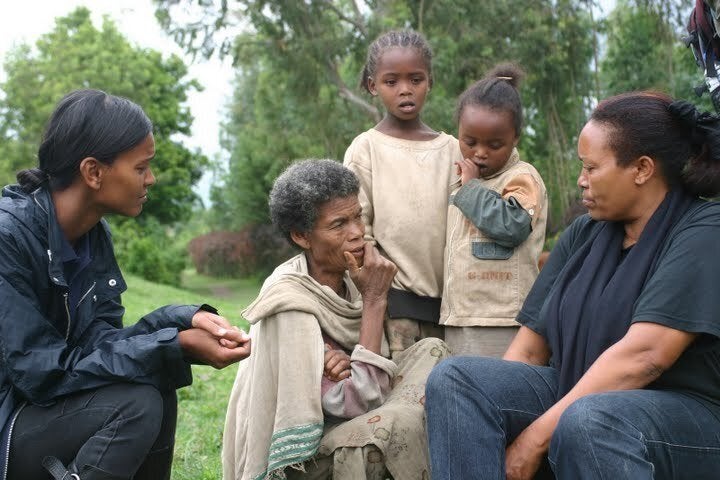
French poet Victor Hugo once remarked that "there's nothing more powerful than an idea whose time has come." Today, that idea is unmistakable: addressing the political, economic, social, and cultural challenges facing women and girls worldwide. It's no coincidence then that in less than two weeks -- strategically ahead of the G8 Summit to be held in Canada -- the world's leading voices on advancing the lives and livelihoods of women and girls around the world will come together in Washington, D.C., for the 2010 Women Deliver Summit. And if the list of featured speakers, plenary sessions, and concurrent discussions are any indication, this convening promises to be a fire-starter of global action as we enter the second decade of the 21st century.
In addressing the most urgent inequalities and challenges facing women and girls, the two main points of Women Deliver are simple: the Millennium Development Goals (MDGs) cannot be achieved without investing in women, and if we act now, we can still achieve MDG-5: reducing the maternal mortality ratio by three quarters and providing universal access to reproductive health by 2015. The convening, however, is one of many moving parts working together to orchestrate a massive global movement to equalize opportunity and access for women and girls internationally.
Highlighting the many positive outcomes of U.S. investments in global health, the Bill and Melinda Gates Foundation's Living Proof Project aims to turn the tide of public perception regarding ineffective U.S. spending on bettering health outcomes around the world. The Project is a collection of 5 minute mini-documentaries that showcase U.S. tax dollars saving lives in an incredibly powerful manner; in short, it is video advocacy at its finest. One pressing challenge in developing countries is the fact that 80% of all premature and low-birth-weight infants are born far away from hospitals and traditional incubators. Capitalizing on the body's inherent warmth, the Living Proof Project highlights "Kangaroo Mother Care" in Malawi--the video was recently shown at the Global Philanthropy Forum in San Francisco and is embedded below.
Indeed, a recent social enterprise coming out of Stanford's Entrepreneurial Design for Extreme Affordability Program also attempts to address this dilemma. While traditional premature infant incubators cost approximately $20,000, Embrace, a specially designed pouch that regulates body temperature without electricity or moving parts, costs a mere $25. Such ingenuity is tied to a new kind of thought process: design thinking for social innovation. It is precisely this new approach that led to a simple yet brilliant advance in tackling issues of water transport in developing countries.
One in six people worldwide spend arduous efforts everyday in order to acquire water. While the United Nations recommends a minimum of 5 gallons of water per day to maintain a basic level of human health, the poor only have access to one to two gallons per day. Moreover, women and girls are primarily responsible for water collection, a task that absorbs 25% of their time each and every day. Traditionally, water is carried on the head in a five-gallon container that weighs 44 pounds. And according to UNESCO's World Water Development Report, issues surrounding poverty are closely linked with the availability, proximity, quantity and quality of water. The invention, named the Water Roller, makes it possible to collect 24 gallons of water at once -- five times the traditional amount -- in less time, and more easily. The effects of such an invention are impossible to overstate, for giving people easier access to clean water frees up valuable time and removes barriers preventing girls from going to school and women from engaging in more productive activities. But that isn't the only layer of societal benefit arising from such social innovation: the Water Roller has the potential to affect the global contraception crisis, too.
According to a recent study by the Guttmacher Institute on worldwide access to contraception and reproductive health services, 215 million women around the world are sexually active and don't want to become pregnant--and are not using forms of modern contraception. In the immediate, estimates of making contraception available to all these women globally is less than $4B, but in the long-term, Nicholas Kristof, New York Times journalist and author of Half the Sky: Turning Oppression into Opportunity for Women Worldwide, asserts that a girls' education may be the most effective contraceptive of all. Therefore, while the original innovation of the Water Roller was aimed at tackling issues of water access, transport, and basic human health, the benefits to society of such innovations are not merely of the 1st and 2nd order, but also of the 5th and 6th order. At the heart of social innovation, however, is the commitment to making a difference and bettering our world for future generations. Only one convening has taken the word commitment and turned it into an international platform for action: the Clinton Global Initiative (CGI).
Founded by President Clinton in 2005, CGI members -- heads of state, Nobel Peace Prize winners, hundreds of leading global CEOs, major philanthropists and foundation heads, directors of the most effective non-governmental organizations, and prominent members of the media--have made nearly 1,700 commitments valued at $57 billion, which have already improved more than 200 million lives in 150 countries. A platform of this nature wields a powerful and catalytic stick to foster continuous positive change around the world, and while in 2009, CGI had a special focus on women and girls, in 2010, the topic will be elevated into its own action area. With subtopics spanning access to education, maternal health, violence against women and girls, trafficking and slavery, among many others, CGI 2010 promises to build on the momentum, solidarity and impact of upcoming Women Deliver.
Against this backdrop, there really is nothing more powerful than an idea whose time has come.
For more articles by Rahim Kanani, click here.
